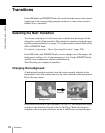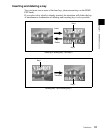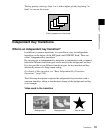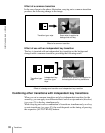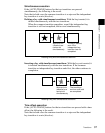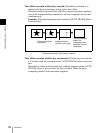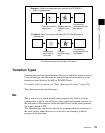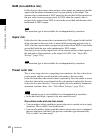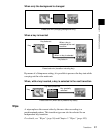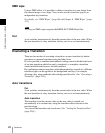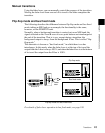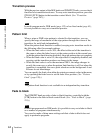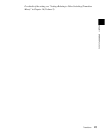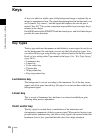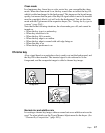
Chapter 1 DVS-9000 Functions
40
Transitions
NAM (non-additive mix)
In this dissolve, the current video and new video signals are compared, and the
signal with the higher luminance level is given priority in the output. The
current video is maintained at 100% output for the first half of the transition as
the new video increases progressively to 100%, then the current video is
progressively reduced from 100% to zero in the second half with the new video
maintained at 100% output.
Note
This transition type is not available for an independent key transition.
Super mix
In this dissolve, the current video is maintained at 100% output for the first half
of the transition as the new video is mixed while increasing progressively to
100%, then the current video is progressively reduced from 100% to zero in the
second half with the new video maintained at 100% output.
Note that you can set the output levels of the current and new video signals at
the mid-point of the transition, in the range 0 to 100%. (See “Super Mix
Settings” (page 233).)
Note
This transition type is not available for an independent key transition.
Preset color mix
This is a two-stage dissolve, comprising two transitions, the first a dissolve to
a color matte, and the second from the color matte to the new video.
In the first transition, the current video is replaced by the color matte in a mix
(dissolve), then in the second transition the color matte is replaced by the new
video also in a mix (dissolve). You can specify the color matte by luminance,
saturation, and hue values. (See “Color Matte Settings” (page 234).)
Notes
• This transition type is not available for an independent key transition.
• In the bus fixed mode, a preset color mix cannot be used.
One-stroke mode and one-time mode
• You can make a setting such that a preset color mix is carried out in a single
transition. This is called “one-stroke mode.”
• You can also make a setting such that when a preset color mix is completed,
the next transition switches to the previous transition type automatically.
This is called “one-time mode.”



